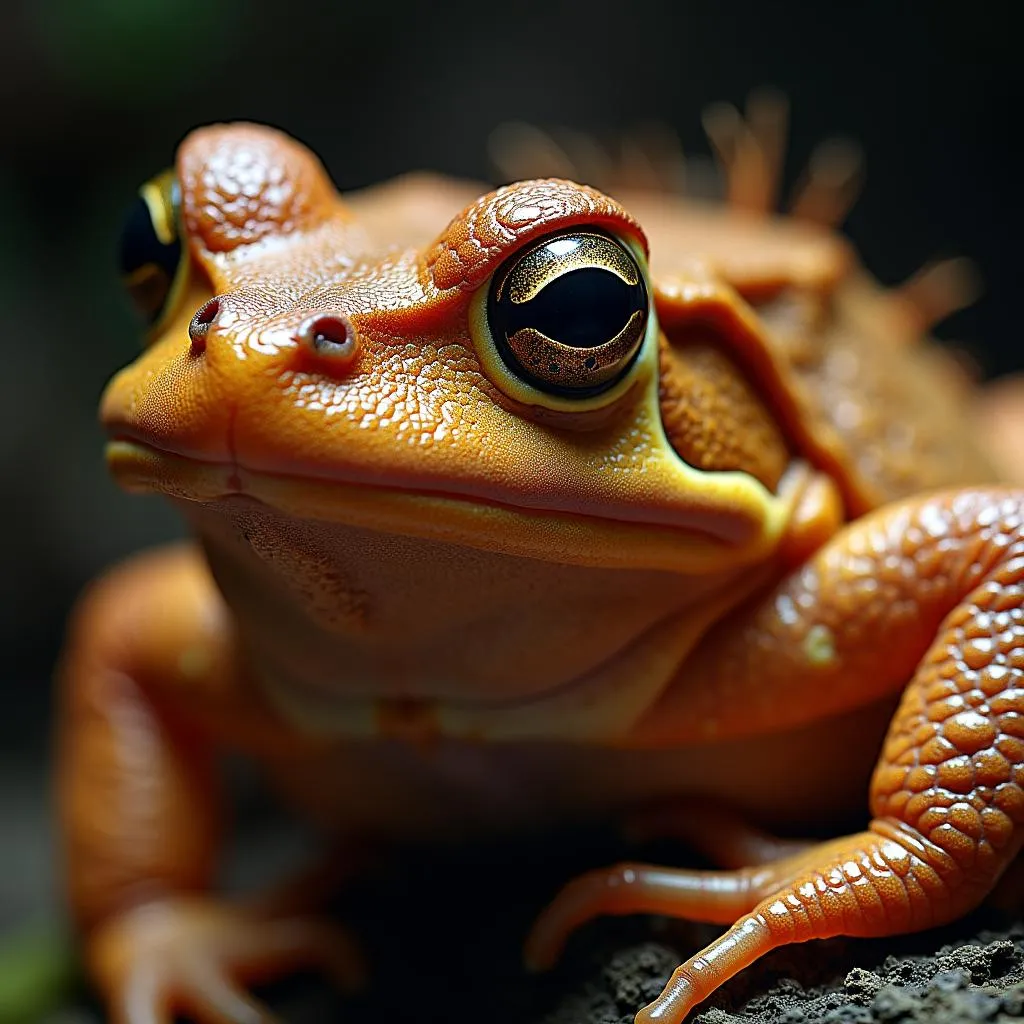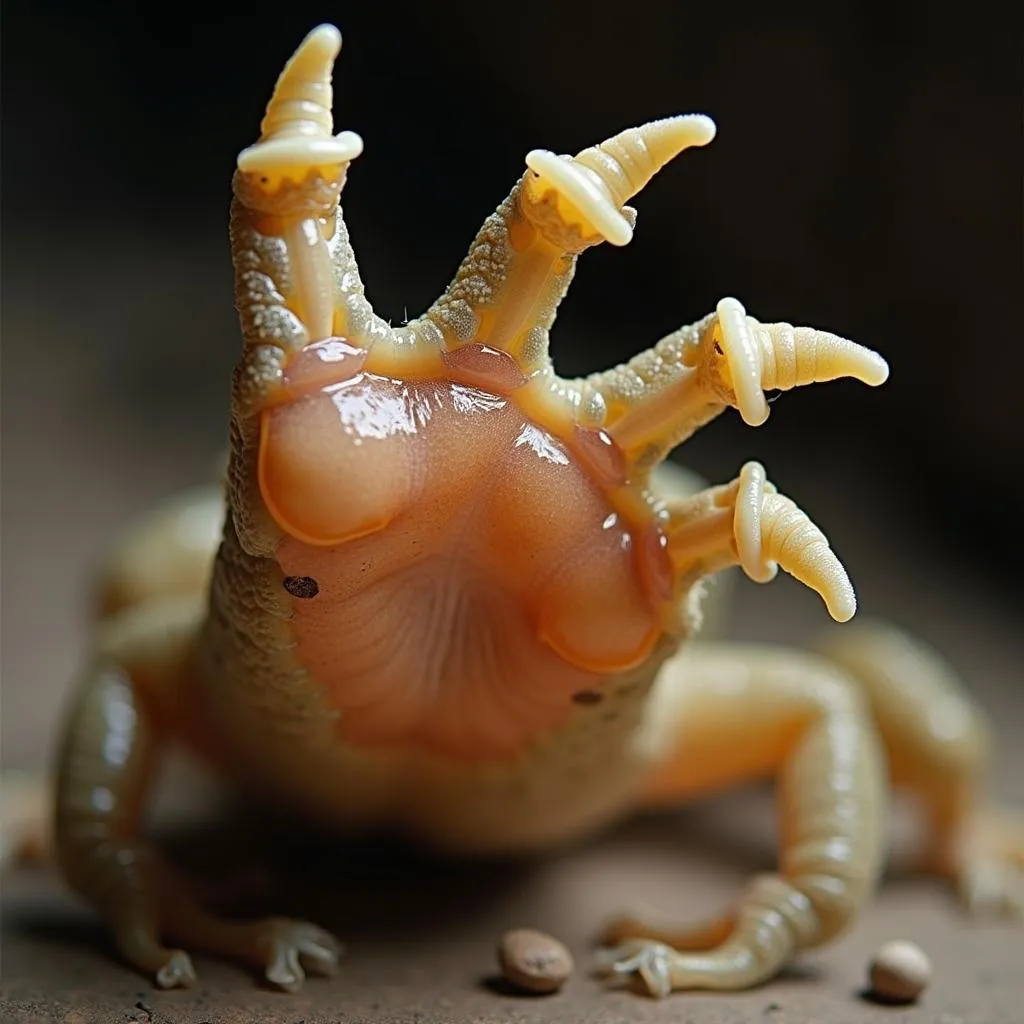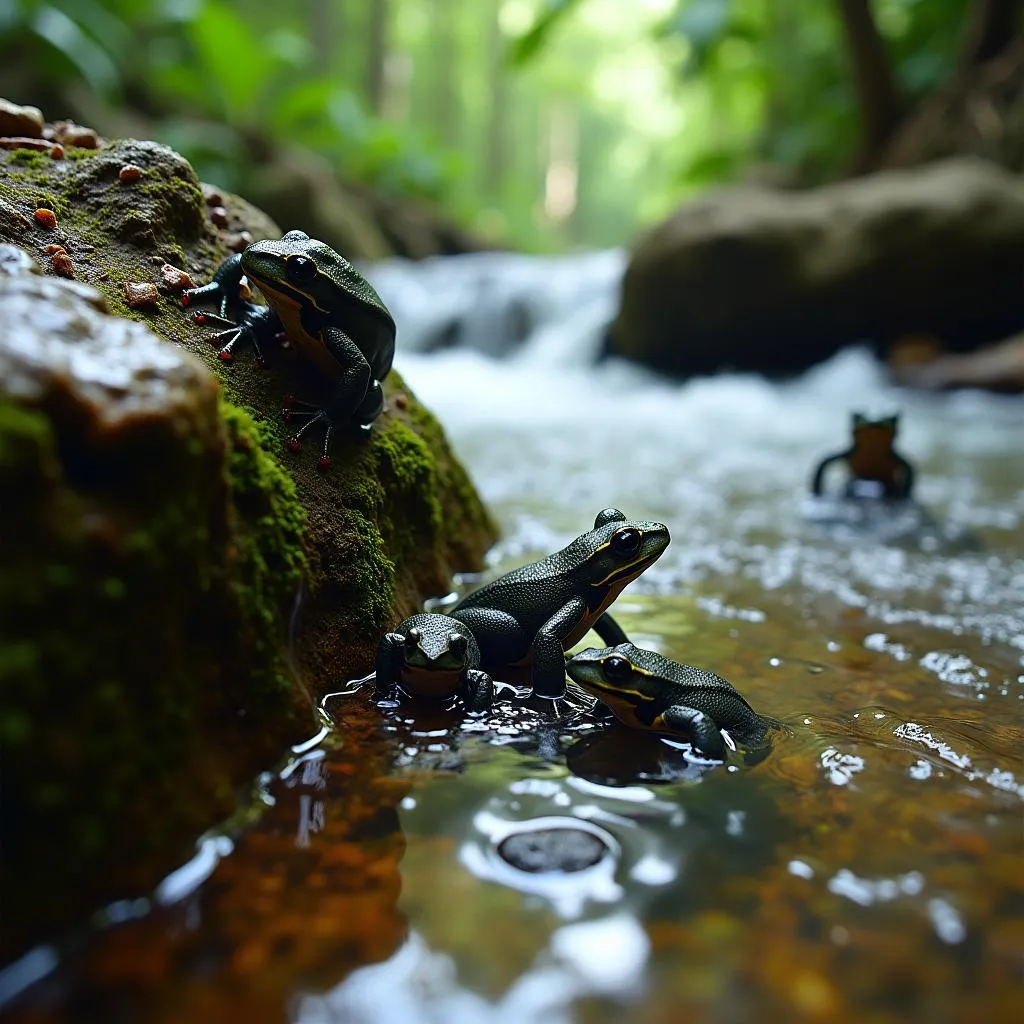The African Hairy Frog: A Bizarre Amphibian with Wolverine Claws
The African Hairy Frog, also known as the Trichobatrachus robustus, is a fascinating and unusual amphibian found in the rainforests of Central Africa. This peculiar frog is known for its bizarre appearance, including its “hairy” body and retractable claws, making it a popular topic in the world of herpetology.
Hairy, But Not Really: Unraveling the Mystery
Despite its name, the African hairy frog isn’t actually hairy. The “hair-like” structures that sprout from the sides of its body during the breeding season are actually highly vascularized dermal papillae. These papillae act as external gills, increasing the frog’s surface area for oxygen absorption, especially crucial when males spend extended periods guarding their eggs in oxygen-poor water.
 African Hairy Frog with Dermal Papillae
African Hairy Frog with Dermal Papillae
Claws of Bone: A Unique Defense Mechanism
One of the most intriguing features of the African hairy frog is its retractable claws, made of bone and resembling those of a wolverine. When threatened, this frog forces its sharp claws through its toe pads, effectively breaking the bone to create a sharp point of defense. This remarkable adaptation is a rare example of claw retraction in amphibians and is thought to be used for defense against predators like snakes and birds.
 African Hairy Frog with Extended Claws
African Hairy Frog with Extended Claws
Habitat and Lifestyle: King of the Rainforest Streams
African hairy frogs are primarily found in the fast-flowing, clear streams of the rainforests of Cameroon, Congo, Gabon, and Equatorial Guinea. They are largely terrestrial, preferring to stay near the water’s edge and hunt for insects, worms, and other small invertebrates. Their camouflaged coloration helps them blend seamlessly into their surroundings, making them adept at ambushing prey.
Reproduction: From Eggs to Tadpoles
Breeding occurs during the rainy season when males establish territories in the streams. They attract females with a series of chirping calls and defend their chosen breeding sites fiercely. Females lay their eggs on rocks or submerged vegetation, and the males diligently guard them until they hatch. The tadpoles develop in the water, eventually metamorphosing into adult frogs.
 African Hairy Frog Tadpoles in Stream
African Hairy Frog Tadpoles in Stream
Conservation Status and Threats: A Species in Decline
The African hairy frog is currently listed as “Least Concern” by the International Union for Conservation of Nature (IUCN). However, their populations are facing growing threats due to habitat loss, deforestation, and the pet trade. The destruction of their rainforest habitat for logging and agriculture is fragmenting their populations and reducing their breeding sites.
Conclusion: A Unique Amphibian with Intriguing Adaptations
The African hairy frog is a testament to the incredible diversity of life on Earth. Its unique adaptations, like its “hairy” skin and retractable claws, make it a captivating subject of study for scientists and nature enthusiasts alike. By understanding and appreciating the intricate lives of these fascinating amphibians, we can better contribute to their conservation and ensure that future generations can marvel at the wonders of the African hairy frog.
FAQ:
1. What is the scientific name of the African hairy frog?
The scientific name of the African hairy frog is Trichobatrachus robustus.
2. Why does the African hairy frog have “hair”?
The “hair” on the African hairy frog is not actually hair, but rather highly vascularized dermal papillae that function as external gills.
3. How does the African hairy frog use its claws?
The African hairy frog uses its retractable claws for defense. When threatened, it forces the claws through its toe pads, breaking the bone to create a sharp point.
4. Where can you find African hairy frogs?
African hairy frogs are found in the rainforests of Central Africa, specifically in countries like Cameroon, Congo, Gabon, and Equatorial Guinea.
5. Are African hairy frogs endangered?
While not currently endangered, African hairy frogs are facing threats from habitat loss and the pet trade, leading to population declines in some areas.
Do you have any other questions about the fascinating African hairy frog? Contact us for more information!
Need assistance? Reach us at:
Phone: +255768904061
Email: [email protected]
Address: Mbarali DC Mawindi, Kangaga, Tanzania.
We have a 24/7 customer support team ready to assist you.

